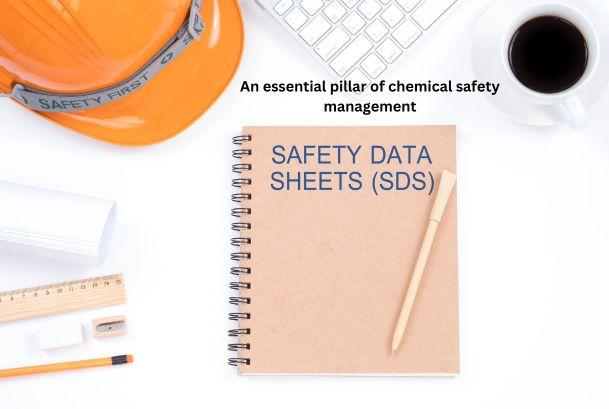An essential pillar of chemical safety management, Safety Data Sheets (SDSs) serve as a critical resource for understanding hazards, mitigating risks, and ensuring compliance with global regulations. Under the Globally Harmonized System of Classification and Labelling of Chemicals (GHS), SDSs adopt a standardized format to harmonize chemical safety communication across borders. This alignment enables seamless trade, enhances workplace safety, and supports environmental protection.
1. Purpose of SDS in GHS
SDSs are designed to:
- Protect stakeholders: Inform workers, emergency responders, and consumers about chemical hazards.
- Guide safe practices: Provide actionable advice on handling, storage, disposal, and emergency response.
- Ensure compliance: Help organizations adhere to national and international safety regulations (e.g., OSHA Hazard Communication Standard in the U.S., REACH in the EU).
- Facilitate transparency: Disclose chemical composition, exposure limits, and toxicological data to promote informed decision-making.
2. SDS Structure Under GHS
The GHS mandates a 16-section format to standardize information delivery. Below is an expanded overview of key sections and their practical applications:
Section 1: Identification
- Includes product identifiers, supplier details, and recommended/restricted uses.
- Critical for traceability and ensuring proper application of the chemical.
Section 2: Hazard Identification
- GHS classification, signal words (e.g., Danger, Warning), hazard statements (e.g., H302: Harmful if swallowed), and pictograms (e.g., flame, skull).
- Enables quick visual recognition of risks.
Section 3: Composition/Ingredients
- Lists chemical components, concentrations, and CAS numbers.
- Vital for assessing exposure risks and regulatory compliance (e.g., TSCA in the U.S.).
Section 4–8: Operational Safety Guidance
- First aid measures (Section 4): Tailored responses for inhalation, skin contact, or ingestion.
- Fire-fighting measures (Section 5): Identifies suitable extinguishing agents and combustion hazards.
- Accidental release protocols (Section 6): Spill containment and cleanup procedures.
- Handling and storage (Section 7): Highlights incompatibilities (e.g., acids vs. bases) and safe storage conditions.
- Exposure controls (Section 8): Specifies PPE (respirators, gloves) and occupational exposure limits (OELs).
Section 9–11: Scientific and Health Data
- Physical properties (Section 9): Boiling point, pH, flammability.
- Stability and reactivity (Section 10): Risks of decomposition or hazardous reactions.
- Toxicological data (Section 11): Acute/chronic health effects, carcinogenicity, and exposure routes.
Section 12–16: Regulatory and Supplemental Information
- Environmental impact (Section 12): Biodegradability, aquatic toxicity (often omitted in U.S. SDSs).
- Disposal considerations (Section 13): Aligns with waste regulations (e.g., RCRA in the U.S.).
- Transport details (Section 14): UN numbers, shipping classifications (e.g., IATA, ADR).
- Regulatory status (Section 15): Links to regional laws (e.g., CLP in the EU).
- Revision history (Section 16): Tracks updates to ensure SDS accuracy.
Note: Sections 12–16 are optional in the U.S., reflecting OSHA’s focus on occupational safety over environmental or transport regulations.
3. Importance of SDS Compliance
- Legal adherence: Non-compliance risks fines, litigation, and trade barriers (e.g., EU REACH penalties).
- Worker safety: Reduces accidents and long-term health risks (e.g., chemical burns, respiratory illnesses).
- Environmental stewardship: Guides proper disposal to prevent contamination.
- Emergency preparedness: Equips responders with actionable data during spills or fires.
4. Global Compliance Challenges and the Role of Chemical Regulatory Intelligence Tools
Navigating SDS requirements across jurisdictions (e.g., U.S., EU, Asia-Pacific) is complex due to:
- Divergent mandates (e.g., U.S. OSHA vs. EU CLP regulations).
- Frequent regulatory updates (e.g., new GHS revisions, substance restrictions).
- Language and formatting requirements (e.g., country-specific SDS templates).
Chemical regulatory intelligence tools address these challenges by:
- Automating compliance: Tracking real-time updates to GHS, REACH, TSCA, and other frameworks.
- Streamlining SDS authoring: Generating region-specific SDSs with pre-validated content libraries.
- Ensuring accuracy: Flagging discrepancies in hazard classifications or regulatory data.
- Centralizing management: Storing SDSs in digital repositories for easy access and audits.
For example, these tools can automatically adjust SDS content when a chemical’s classification changes under GHS Revision 9 or when new PFAS restrictions are enacted.
5. Leveraging Technology for SDS Management
Modern enterprises increasingly rely on chemical regulatory intelligence platforms to:
- Integrate with ERP/SAP systems: Sync SDS data with procurement and inventory workflows.
- Enable multi-lingual SDS generation: Meet EU MDR or Asia-Pacific labeling requirements.
- Conduct gap analyses: Identify missing data (e.g., ecotoxicology studies) for compliance.
6. Conclusion
SDSs are indispensable for chemical safety, but their complexity demands robust compliance strategies. By adopting chemical regulatory intelligence tools, organizations can efficiently manage SDS lifecycle processes, mitigate risks, and adapt to evolving global standards. As regulations grow stricter (e.g., SCIP database reporting in the EU), these tools will remain pivotal in achieving compliance, protecting human health, and fostering sustainable chemical management.
Key Takeaway: In a globally interconnected market, SDS compliance is not optional—it’s a strategic imperative enabled by technology and regulatory foresight.




